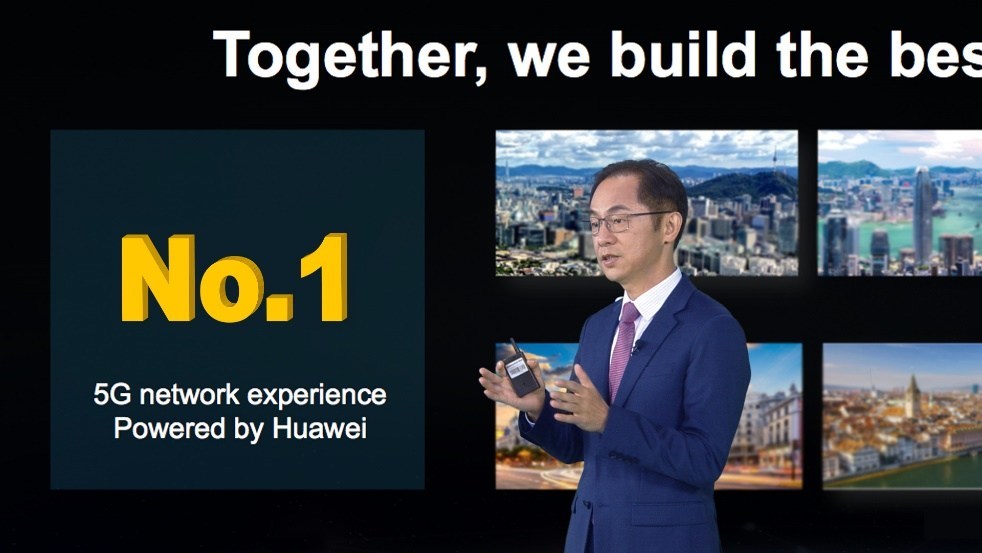Huawei: 5G Technology Illuminates the Future + Huawei analysis
On the eve of MWC Shanghai 2021, Ryan Ding, CEO and President of Huawei’s Carrier Business Group, talked about “5G technology lights up the future.”
“2020 has been a difficult year. During that period, Huawei worked closely with our customers,” said Ding.
In 2020, Huawei supported the stable operations of more than 300 networks in more than 170 countries and helped operators offer online services and minimize the impact of the pandemic on their businesses. In collaboration with Huawei, the operators attracted 22 million new residential wireless broadband users around the world. Thanks to this, people can easily access telemedicine services and work from home.
“5G developed faster than we expected.” More than 140 commercial 5G networks have been implemented in 59 countries.
According to Ding, more than 50% of these networks were built by Huawei. The ecosystem is also developing. In China , more than 68% of the smartphones distributed in 2020 were 5G phones. More than 200 industrial 5G modules and devices are currently available, supporting 5G applications in a wide range of industries.

Huawei’s Ryan Deng talking up 5G
According to reports prepared in 2020 by market research firms such as IHS, P3, OpenSignal and Meqyas, the best 5G networks in Seoul, Amsterdam, Madrid, Zurich, Hong Kong and Riyadh were the ones that Huawei built.
Ding highlighted that a good experience on the web is the foundation of commercial success and that these six cities are only the tip of the iceberg of its purpose of collaborative innovation with the operators.
For example, by implementing Huawei’s AAU 64T64R and market-leading multi-antenna algorithms, LG u + achieved greater spectrum efficiency and a network experience more than 25% better than other carriers. With Huawei’s Blade AAU, which can operate in the Sub3G and C bands, Sunrise reduced site acquisition time from 24 months to just 6 months and was the only operator with 5 consecutive outstanding ratings in Switzerland.
5G is becoming part of the core production processes of industries. Looking ahead, Ding was optimistic about the prospect of a large-scale deployment of 5G industrial applications in 2021.
5G applications have been incorporated in more than 20 industries including manufacturing, healthcare, education and logistics. The manager pointed to examples of sectors in China where industrial 5G applications are already proving their value, such as in coal mining and steel fabrication and production, where the adoption of 5G technology has made production safer, smarter and more efficient. He also stressed: “5G is no longer exclusive to pioneer users, but aims to improve our daily lives. 2021 will be the 1st year with large-scale industrial 5G applications.
Operators will need new capabilities in planning areas network operations, implementation, maintenance, optimization and operations to achieve zero-to-one progress and replicate one-to-many success.
At the next MWC Shanghai, Huawei will hold in-depth exhibitions and discussions on these topics with stakeholders. of the sector, both online and through means that do not require connection. We will continue to innovate to help our customers develop the best 5G networks and achieve greater business success.”
SOURCE: Huawei
………………………………………………………………………………………………….
Analysis by Iain Morris of Light Reading:
Of today’s 140 “live” 5G networks, Huawei built more than half, said Ryan Ding, the head of Huawei’s networks division, during the company’s traditional briefing before the annual MWC Shanghai show (normally scheduled for June, it switched places with the bigger Barcelona show this year due to coronavirus).
Huawei can rely on a domestic market that has awarded almost 90% of all mobile infrastructure business to Chinese vendors. When the number of 5G base stations in a country hits 700,000, as it did last year in China, any pain elsewhere becomes tolerable. Several hundred thousand more are planned in 2021. Contrast that with Europe, where the entire region in 2019 hosted fewer than half a million mobile sites, according to Ernst & Young.
Even in Europe, Huawei’s networks business has not suffered as badly as it might have done. Several big countries have resisted political pressure to copy the UK and exclude Huawei from the future 5G market. They include Germany, where Huawei last year accounted for more than half the country’s mobile infrastructure. Its government undoubtedly fears the ramifications of a ban for exports of cars and machine tools to China.
Huawei’s massive fixed-line business has also been allowed to chug on outside the UK, which is now weighing a final decision. Smaller than the radio access networks business, broadband products still generated more than $8.4 billion in global revenues last year, according to Omdia, a sister company to Light Reading. Some 43% of that went to Huawei. In France, where authorities have indicated they will not renew licenses for Huawei’s mobile equipment, Orange counts Huawei as one of its two main broadband vendors (the other being Nokia).
…………………………………………………………………………………………….
Several European operators, including Deutsche Telekom, Orange and Spain’s Telefónica, have previously bought Huawei equipment for the cloud services they offer to their business customers. “Huawei provides standards servers (with the so-called x86 architecture) for the Open Telekom Cloud,” said a Deutsche Telekom spokesperson, in an email to Light Reading, when asked if that equipment remained in use.
Reference:
https://www.lightreading.com/5g/huawei-is-proving-as-hard-to-stop-as-movie-supervillain


